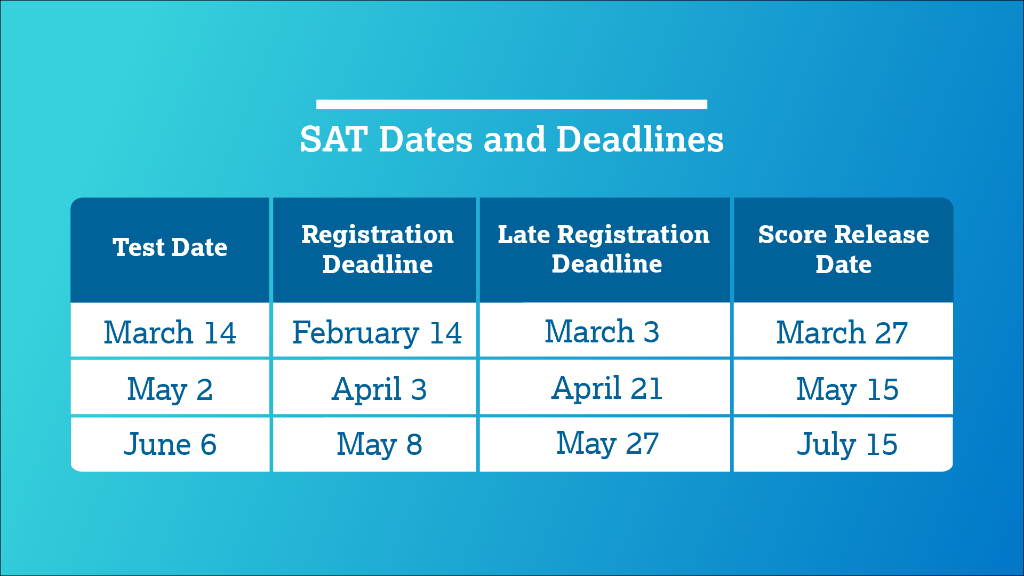Question:
Explain the concept of Differential Equations
Solution:
### Understanding Differential Equations: A Beginner’s Guide
Differential equations are equations that involve derivatives of a function. These equations are used to model a wide variety of phenomena in science, engineering, economics, and many other fields. In essence, they describe how things change.
#### What are Differential Equations?
* **Definition:** A differential equation is an equation that relates a function to its derivatives.
* **Purpose:** They are used to model dynamic systems, where the rate of change of a quantity is important. This means understanding how a quantity changes over time (or with respect to another variable).
#### Types of Differential Equations
Differential equations can be classified in several ways:
* **Ordinary Differential Equations (ODEs):** These involve functions of only one independent variable and their derivatives with respect to that variable. For example, $frac{dy}{dx} = f(x,y)$.
* **Partial Differential Equations (PDEs):** These involve functions of several independent variables and their partial derivatives with respect to those variables. For example, $frac{partial u}{partial t} = frac{partial^2 u}{partial x^2}$. (We typically don’t cover these in detail in standard IB Analysis.)
* **Order:** The order of a differential equation is the order of the highest derivative that appears in the equation. For example:
* $frac{dy}{dx} + y = x$ is a first-order differential equation.
* $frac{d^2y}{dx^2} + 3frac{dy}{dx} + 2y = 0$ is a second-order differential equation.
* **Linearity:** A differential equation is linear if the dependent variable and its derivatives appear only to the first power and are not multiplied together. Otherwise, it is non-linear.
#### Solving Differential Equations
Solving a differential equation means finding the function that satisfies the equation. This function is called the *solution* of the differential equation.
* **General Solution:** The general solution contains arbitrary constants. These constants arise from the integration process. For an nth-order differential equation, the general solution will contain *n* arbitrary constants.
* **Particular Solution:** A particular solution is obtained from the general solution by assigning specific values to the arbitrary constants. These values are determined by initial conditions or boundary conditions.
#### Methods for Solving First-Order ODEs
Here are a few common methods you’ll encounter in IB Analysis:
* **Separation of Variables:** This method is applicable when the differential equation can be written in the form $frac{dy}{dx} = f(x)g(y)$. The steps are:
1. Separate the variables: $frac{dy}{g(y)} = f(x) dx$
2. Integrate both sides: $int frac{dy}{g(y)} = int f(x) dx$
3. Solve for $y$ to obtain the general solution.
* **Homogeneous Equations:** These are equations of the form $frac{dy}{dx} = f(frac{y}{x})$. They can be solved using the substitution $v = frac{y}{x}$, which transforms the equation into a separable equation.
* **Integrating Factors:** Used for linear first-order equations of the form $frac{dy}{dx} + P(x)y = Q(x)$.
1. Find the integrating factor: $I(x) = e^{int P(x) dx}$
2. Multiply both sides of the equation by $I(x)$. The left side will become the derivative of $yI(x)$.
3. Integrate both sides: $int frac{d}{dx}(yI(x)) dx = int I(x)Q(x) dx$
4. Solve for $y$.
#### Worked Examples
Here are two examples to illustrate the separation of variables method.
##### Example 1:
Solve the differential equation $frac{dy}{dx} = xy$.
1. **Separate the variables:**
$frac{dy}{y} = x dx$
2. **Integrate both sides:**
$int frac{dy}{y} = int x dx$
$ln|y| = frac{1}{2}x^2 + C_1$
3. **Solve for y:**
$y = e^{frac{1}{2}x^2 + C_1} = e^{frac{1}{2}x^2}e^{C_1}$
$y = Ae^{frac{1}{2}x^2}$, where $A = e^{C_1}$ is an arbitrary constant. This is the general solution.
##### Example 2:
Solve the differential equation $frac{dy}{dx} = frac{x}{y}$ with the initial condition $y(0) = 2$.
1. **Separate the variables:**
$y dy = x dx$
2. **Integrate both sides:**
$int y dy = int x dx$
$frac{1}{2}y^2 = frac{1}{2}x^2 + C$
3. **Solve for y (general solution):**
$y^2 = x^2 + 2C$
$y = pm sqrt{x^2 + 2C}$
4. **Apply the initial condition y(0) = 2:**
$2 = pm sqrt{0^2 + 2C}$
$2 = pm sqrt{2C}$
Since $y(0) = 2$ is positive, we take the positive root.
$2 = sqrt{2C}$
$4 = 2C$
$C = 2$
5. **Substitute C back into the general solution to find the particular solution:**
$y = sqrt{x^2 + 4}$
#### Tips and Common Mistakes
* **Don’t forget the constant of integration!** This is a very common mistake.
* **Check your solution:** Substitute your solution back into the original differential equation to verify that it satisfies the equation.
* **Be careful with signs:** Pay close attention to signs when separating variables and integrating.
* **Initial conditions are crucial:** To find a particular solution, you must have initial conditions.
* **Know your integration techniques:** Solving differential equations often requires a solid understanding of integration.
#### Real-World Applications
Differential equations are used to model:
* **Population growth:** How populations of organisms change over time.
* **Radioactive decay:** The rate at which radioactive substances decay.
* **Newton’s Law of Cooling:** The rate at which an object cools down.
* **Circuit analysis:** The behavior of electrical circuits.
* **Fluid dynamics:** The motion of fluids.
* **Chemical reactions:** The rates of chemical reactions.
* **Economics:** Modeling economic growth and market behavior.
#### Conclusion
Differential equations are a powerful tool for modeling and understanding change. While they can seem daunting at first, mastering the basic techniques and understanding the underlying concepts will open up a whole new world of mathematical applications. Start with the basics, practice regularly, and don’t be afraid to ask for help when you get stuck! Remember to always include the constant of integration and to check your solution. Good luck!
{
“@context”: “https://schema.org”,
“@type”: “FAQPage”,
“mainEntity”: {
“@type”: “Question”,
“name”: “Explain the concept of Differential Equations”,
“acceptedAnswer”: {
“@type”: “Answer”,
“text”: “Okay, let’s explore the world of differential equations, a crucial topic in IB Analysis!nn### Understanding Differential Equations: A Beginner’s GuidennDifferential equations are equations that involve derivatives of a function. These equations are used to model a wide variety of phenomena in science, engineering, economics, and many other fields. In essence, they describe how things change.nn#### What are Differential Equations?nn* **Definition:** A differential equation is an equation that relates a function to its derivatives.n* **Purpose:** They are used to model dynamic systems, where the rate of change of a quantity is important. This means understanding how a quantity changes over time (or with respect to another variable).nn#### Types of Differential EquationsnnDifferential equations can be classified in several ways:nn* **Ordinary Differential Equations (ODEs):** These involve functions of only one independent variable and their derivatives with respect to that variable. For example, $\frac{dy}{dx} = f(x,y)$.n* **Partial Differential Equations (PDEs):** These involve functions of several independent variables and their partial derivatives with respect to those variables. For example, $\frac{\partial u}{\partial t} = \frac{\partial^2 u}{\partial x^2}$. (We typically don’t cover these in detail in standard IB Analysis.)n* **Order:** The order of a differential equation is the order of the highest derivative that appears in the equation. For example:n * $\frac{dy}{dx} + y = x$ is a first-order differential equation.n * $\frac{d^2y}{dx^2} + 3\frac{dy}{dx} + 2y = 0$ is a second-order differential equation.n* **Linearity:** A differential equation is linear if the dependent variable and its derivatives appear only to the first power and are not multiplied together. Otherwise, it is non-linear.nn#### Solving Differential EquationsnnSolving a differential equation means finding the function that satisfies the equation. This function is called the *solution* of the differential equation.nn* **General Solution:** The general solution contains arbitrary constants. These constants arise from the integration process. For an nth-order differential equation, the general solution will contain *n* arbitrary constants.n* **Particular Solution:** A particular solution is obtained from the general solution by assigning specific values to the arbitrary constants. These values are determined by initial conditions or boundary conditions.nn#### Methods for Solving First-Order ODEsnnHere are a few common methods you’ll encounter in IB Analysis:nn* **Separation of Variables:** This method is applicable when the differential equation can be written in the form $\frac{dy}{dx} = f(x)g(y)$. The steps are:nn 1. Separate the variables: $\frac{dy}{g(y)} = f(x) dx$n 2. Integrate both sides: $\int \frac{dy}{g(y)} = \int f(x) dx$n 3. Solve for $y$ to obtain the general solution.n* **Homogeneous Equations:** These are equations of the form $\frac{dy}{dx} = f(\frac{y}{x})$. They can be solved using the substitution $v = \frac{y}{x}$, which transforms the equation into a separable equation.n* **Integrating Factors:** Used for linear first-order equations of the form $\frac{dy}{dx} + P(x)y = Q(x)$.n 1. Find the integrating factor: $I(x) = e^{\int P(x) dx}$n 2. Multiply both sides of the equation by $I(x)$. The left side will become the derivative of $yI(x)$.n 3. Integrate both sides: $\int \frac{d}{dx}(yI(x)) dx = \int I(x)Q(x) dx$n 4. Solve for $y$.nn#### Worked ExamplesnnHere are two examples to illustrate the separation of variables method.nn##### Example 1:nnSolve the differential equation $\frac{dy}{dx} = xy$.nn1. **Separate the variables:**n $\frac{dy}{y} = x dx$n2. **Integrate both sides:**n $\int \frac{dy}{y} = \int x dx$n $\ln|y| = \frac{1}{2}x^2 + C_1$n3. **Solve for y:**n $y = e^{\frac{1}{2}x^2 + C_1} = e^{\frac{1}{2}x^2}e^{C_1}$n $y = Ae^{\frac{1}{2}x^2}$, where $A = e^{C_1}$ is an arbitrary constant. This is the general solution.nn##### Example 2:nnSolve the differential equation $\frac{dy}{dx} = \frac{x}{y}$ with the initial condition $y(0) = 2$.nn1. **Separate the variables:**n $y dy = x dx$n2. **Integrate both sides:**n $\int y dy = \int x dx$n $\frac{1}{2}y^2 = \frac{1}{2}x^2 + C$n3. **Solve for y (general solution):**n $y^2 = x^2 + 2C$n $y = \pm \sqrt{x^2 + 2C}$n4. **Apply the initial condition y(0) = 2:**n $2 = \pm \sqrt{0^2 + 2C}$n $2 = \pm \sqrt{2C}$n Since $y(0) = 2$ is positive, we take the positive root.n $2 = \sqrt{2C}$n $4 = 2C$n $C = 2$n5. **Substitute C back into the general solution to find the particular solution:**n $y = \sqrt{x^2 + 4}$nn#### Tips and Common Mistakesnn* **Don’t forget the constant of integration!** This is a very common mistake.n* **Check your solution:** Substitute your solution back into the original differential equation to verify that it satisfies the equation.n* **Be careful with signs:** Pay close attention to signs when separating variables and integrating.n* **Initial conditions are crucial:** To find a particular solution, you must have initial conditions.n* **Know your integration techniques:** Solving differential equations often requires a solid understanding of integration.nn#### Real-World ApplicationsnnDifferential equations are used to model:nn* **Population growth:** How populations of organisms change over time.n* **Radioactive decay:** The rate at which radioactive substances decay.n* **Newton’s Law of Cooling:** The rate at which an object cools down.n* **Circuit analysis:** The behavior of electrical circuits.n* **Fluid dynamics:** The motion of fluids.n* **Chemical reactions:** The rates of chemical reactions.n* **Economics:** Modeling economic growth and market behavior.nn#### ConclusionnnDifferential equations are a powerful tool for modeling and understanding change. While they can seem daunting at first, mastering the basic techniques and understanding the underlying concepts will open up a whole new world of mathematical applications. Start with the basics, practice regularly, and don’t be afraid to ask for help when you get stuck! Remember to always include the constant of integration and to check your solution. Good luck!”
}
}
}


